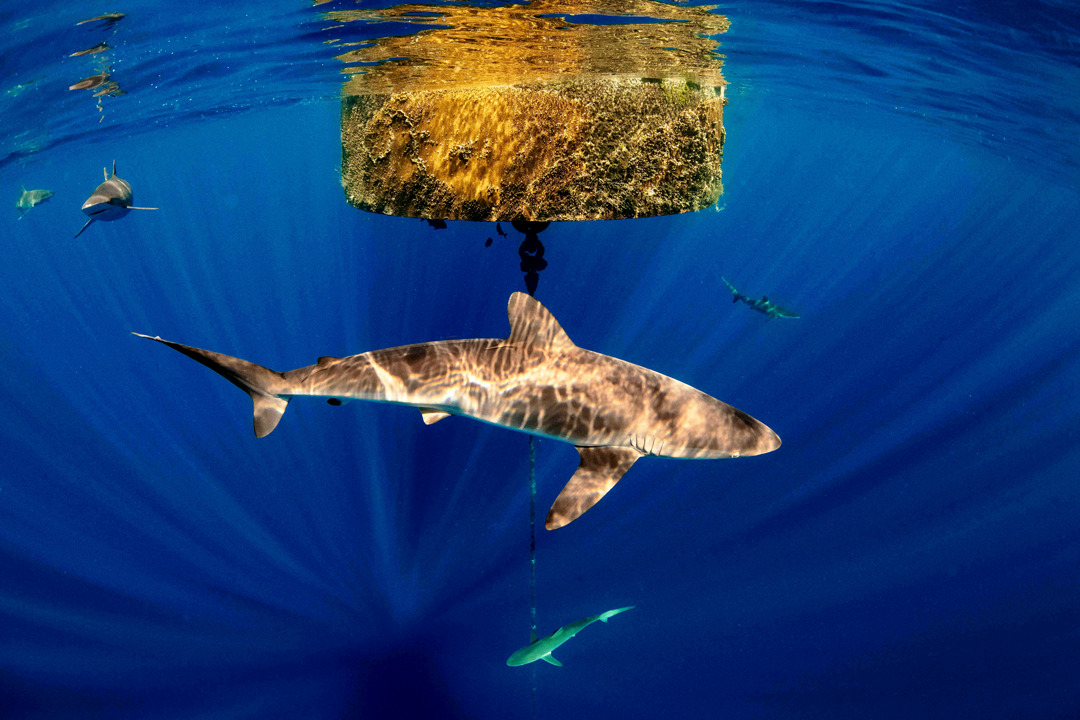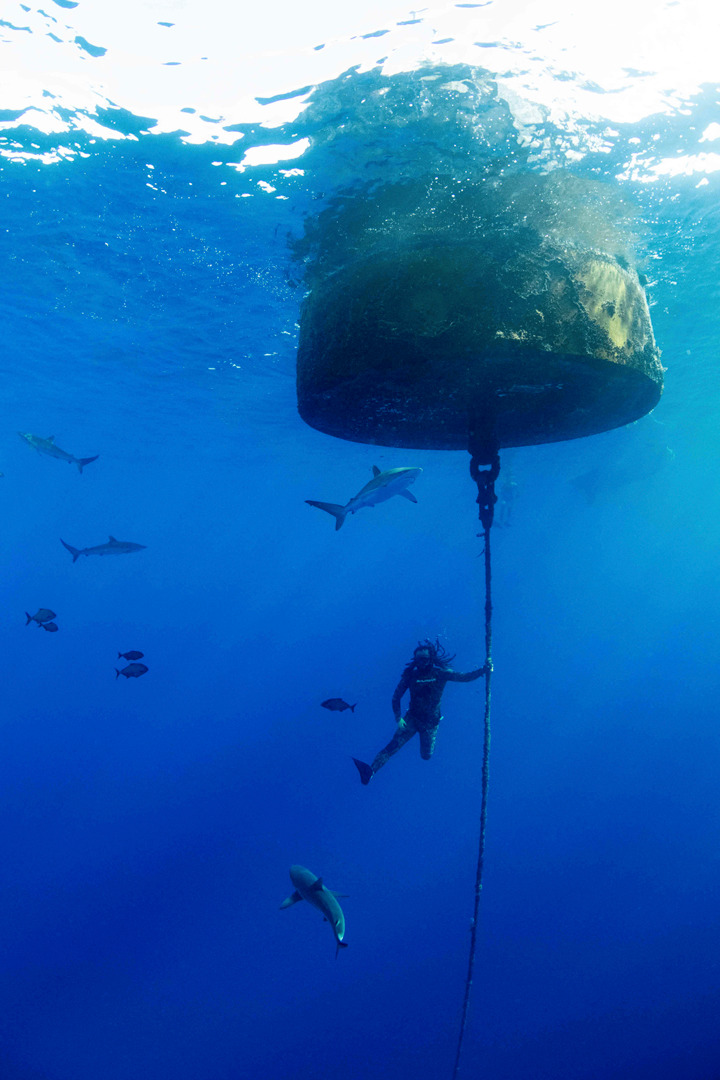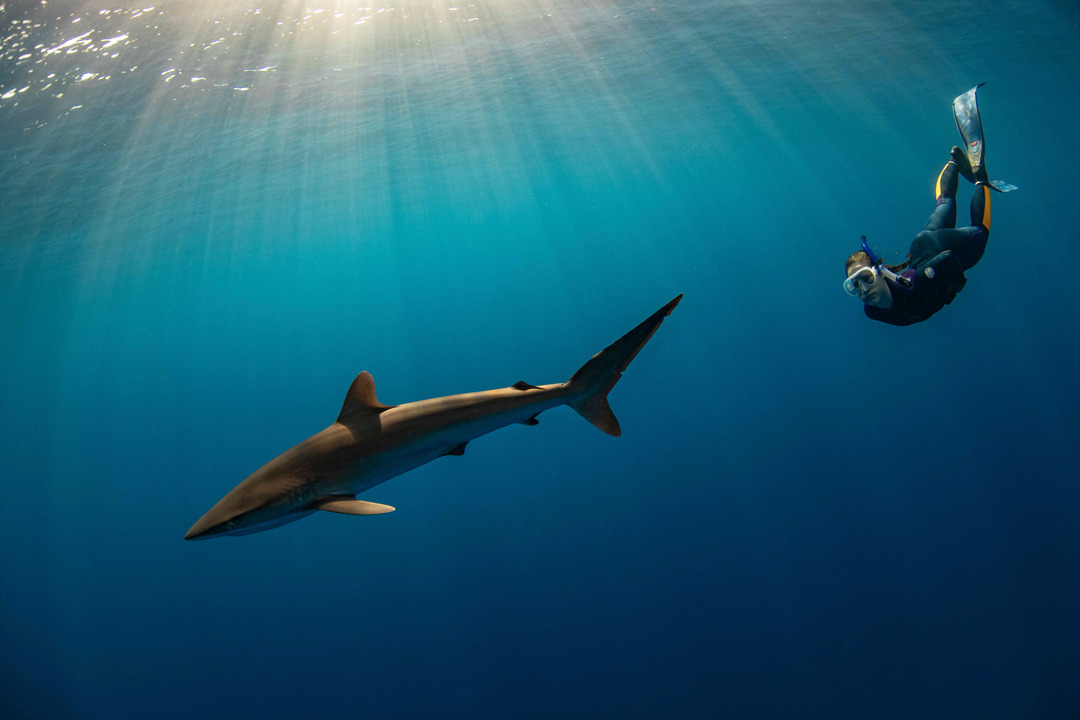The Sleeping Giant – Andros
Andros, Bahamas, is known as ‘the Sleeping Giant.’ Only about 10,000 people call Andros home, but the island is the size of Vermont, where over 1,000,000 live. The low density conveys an immaculate environment with endless mangrove forests, the world’s third-largest barrier reef, hundreds of blue holes, exciting species of sharks and rays – the list goes on and on. One of my favourite features, though, might be unfamiliar to you.

Photo © Annie Guttridge
About 10 km offshore, floating in over 1000 meters of water, is a buoy maintained by the U.S. Navy – we just call it the Navy buoy. While it may seem quite benign from the surface, that could not be further from the truth.
Each trip to the buoy starts the same – wondering what surprises might await us beneath the surface. After a 30-minute boat ride, we eagerly peer into the water on our approach, trying to get a glimpse into the depths. My favourite part comes next. Armed with a mask and snorkel gear, I slowly slide into the water. Sometimes I see nothing – no fish, no floating debris, no algae. Just endless water and nothing more. But sometimes, I see more than what I once thought possible.

Photo © Annie Guttridge
I often become so transfixed looking for the first shark that one slowly slips into my peripheral vision, closing quickly and just a few feet away. No cause for alarm, though. Silkies are bold, curious sharks. I think they are more eager to investigate me than I am to look them over for any tags or other features that may help me identify an individual. They are also quite social; we always see them in social groups. Unfortunately, these traits that are so unique also have a negative. Silky sharks represent over 90% of elasmobranch bycatch in FAD fisheries.
The goal of our work is to understand better the factors that affect silky sharks’ use of the Navy buoy, which is a good model for a FAD. Somedays, you might see 40 sharks, while others, you might see none, but it’s usually somewhere in between. What causes the variation? What role does their social behaviour have on this habitat use? They are tricky questions, but we hope to gain some traction with this project.

Photo © Annie Guttridge
Stay tuned for our next blog, where I will discuss how we are using acoustic telemetry to learn more about the social preference and habitat use of these sharks. We hope such data will allow fisheries managers to consider novel ways to reduce silky shark bycatch on FADs.
